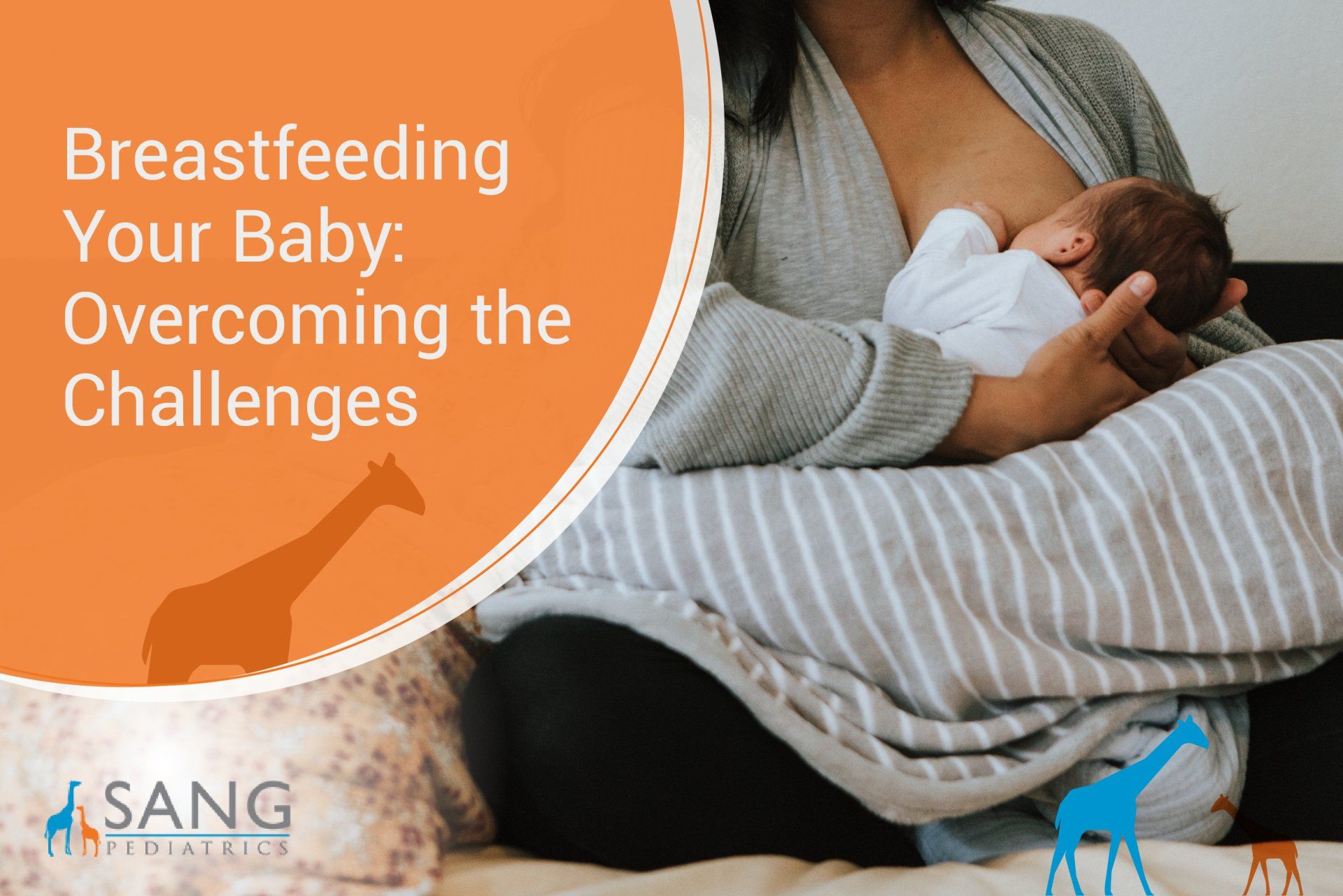Breastfeeding Your Baby: Overcoming the Challenges

While breastfeeding is the best source of nutrition for newborns, many mothers face challenges when breastfeeding their babies. But with the proper support and information, they can overcome these difficulties. This post will outline some of the most common breastfeeding challenges and provide tips for overcoming them.
The Importance of Breast Milk for Your Baby
Health experts strongly recommend choosing breastfeeding as a method of feeding your baby if the mother is capable of doing so. Breastfeeding has unmatched health benefits for both mothers and babies. It contains the proper amount of nutrients your baby requires, and its composition changes according to your baby's age and needs.
Breastfeeding is not only a healthy way to supplement your baby's nutrition, but it can also lower the risk of some short- and long-term health problems. Mother's milk provides immunity to the baby, such as antibodies against various diseases and infections. Moreover, it fosters a strong bond between mother and child, promoting brain development and emotional resiliency.
The process of breastfeeding goes smoothly once the mother and child become accustomed to it. However, for others, it can be a little challenging. The next part will focus on preventing and solving different breastfeeding difficulties. Knowing this upfront will help ensure you receive the help you need if you encounter challenges.
Breastfeeding Challenges and How to Deal with Them
Along with the lack of sleep and exhaustion of having a new baby, breastfeeding has its own set of challenges. But don't worry, every breastfeeding challenge has a solution or a preventative measure, so it will be much easier for you. Furthermore, you may not encounter all of these challenges, but it is better to be prepared in case you do. Here is a list of the obstacles that come with breastfeeding and how to overcome them.
Nipple Pain and Soreness
It is common for breastfeeding mothers to experience sore breasts in the early weeks. The pain you feel when your child latches on might be a result of an incorrect position or the latch being improperly placed. Breastfeeding will be easier once you and your child find a comfortable latch. This helps ease nipple and pain discomfort.
Whenever you breastfeed, find a position that helps your baby latch on. Start by sitting on a chair where you can sit comfortably and be able to lean back. To latch on correctly, the baby's mouth should be open wide with the chin resting on your breast while their head is tilted back, so their nose is not touching your breast. Also, make sure the baby's mouth covers as much of the areola as possible.
If the repositioning and proper latching do not ease the pain, it may be necessary to pump or manually express milk while the nipples heal. In addition, you may also do the following.
- frequently replace nursing pads to avoid accumulating moisture
- air dry breast after feeding
- do skin-to-skin contact
- apply purified lanolin soothing cream after breastfeeding
- alternate breasts in between nursing
Low Milk Supply
Your body produces breast milk in response to the demands of your baby. Occasionally, production may decline, but this is normal so don't worry. This is only temporary. For increased milk supply, you should stimulate and empty your breasts frequently. Other ways to keep your milk supply up include:
- drinking plenty of water
- offering both breasts during feeding
- make sure you nurse frequently
- pumping when you can't breastfeed
- eating a healthy diet and getting enough rest
Mastitis
Mastitis or breast inflammation occurs when the blocked milk ducts are not cleared and are infected. When the nursing mother doesn't empty both breasts or has a cracked nipple, mastitis can occur. This causes the breast to feel hot and painful and can cause you to feel very ill with flu-like symptoms, chills, stiff and painful area on the breast.
Speak to your doctor immediately if you experience any of these symptoms. If your doctor finds the infection, antibiotics can treat it. Mastitis, if left untreated, can lead to a breast abscess that may require surgery to drain. The combination of getting plenty of rest, staying hydrated, and applying warm packs to your painful breast should also help.
Thrush
An infection of the nipples or breasts caused by a fungus is known as thrush. It is also called a yeast infection. There are several signs of thrush, including:
- white spots appear inside of a baby's mouth (cheeks, tongue, or gums)
- nipples that are sore, reddish, shiny, flaky, itchy, blistered, or cracked
- an ache or shooting pain in the breast during or after feeding
Only wash your nipples with water if you think you have a thrush. Then, consult your doctor or your baby's doctor immediately. Both of you will need to receive antifungal treatment for thrush.
Blocked Milk Duct
Clogged milk ducts feel sore and painful. Symptoms include a hard, tender swelling in one area of the breast. If the breasts aren't being fully drained, this can happen. Warming the breast with moist heat helps loosen it, but the best way to unplug it is to feed more from that breast. Sometimes, changing the way you hold your baby can help clear it too.
It is also possible to get pain from a nipple bleb or milk blister. This is a small white blister that appears on the tip of the nipple. You can treat it with a warm compress, gentle massage, frequent nursing, and soaking the nipples with a saline solution.
Breast Engorgement
Once your breasts start making milk, they get fuller, heavier, and a bit tender. This fullness occasionally turns into engorgement, causing your breasts to feel stiff and sore. Engorgement occurs when milk builds up in the breasts. It usually happens a few days after giving birth. However, it can occur at any time, particularly when you have a surplus of milk, don't feed the baby, or express milk frequently.
Engorgement can cause clogged ducts or breast infections, so it should be treated immediately. Below are some tips.
- Nurse frequently after giving birth
- Pump or hand express a bit of milk before breastfeeding to soften the breast and nipple
- You should not use pacifiers or bottles to supplement your baby's feedings until they are 3 or 4 weeks old
- Breastfeed on the engorged side, allowing the milk to flow freely and preventing the breast from becoming too full
- Massage the breast before breastfeeding
- Wear a supportive and comfortable bra that is not too tight
- Drink enough fluids, eat properly, and get enough rest
Give the Best Care for Your Child
Breastfeeding is a rewarding experience, so don't let any challenges discourage you from continuing to nurse your baby. As long as you have patience, the proper knowledge, and your physician's guidance, you can overcome any obstacle and successfully breastfeed your infant.
For more tips and advice on breastfeeding and newborn care, contact Sang Pediatrics today! We give the best pediatric care in Fresno, California. Call (559) 268-1737 or schedule an appointment online.










